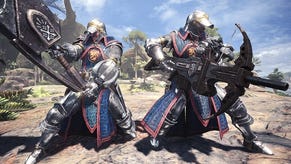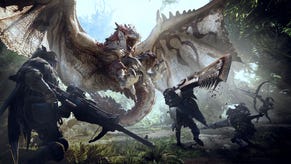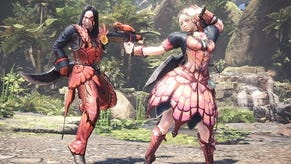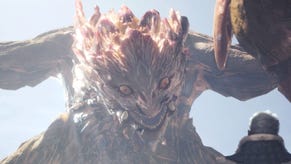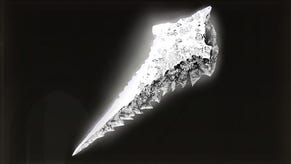What does it take to run Monster Hunter World on PC at 1080p60?
Our settings guide for best performance.
Just how demanding is Monster Hunter World's PC port? Is it really heavy on CPU as coverage of the closed beta seemed to suggest? And if so, what PC hardware is actually required to run the game at a consistent 60 frames per second? We went into this one expecting a battle - lowering CPU requirements is far more challenging with far less room for manoeuvre than tweaking graphics settings. But after extensive testing, the reality is that it is indeed the GPU side of the equation that makes running this title so challenging - and even a GTX 1070 running at just 1080p can't lock to 60 frames per second at max settings.
That kind of performance on so capable a GPU does indeed suggest some kind of CPU problem. However, we ruled that out pretty swiftly. The same areas of gameplay that challenged a Ryzen 7 1700X/GTX 1070 system generally run in the mid 50s or much higher when a GTX 1080 Ti-class hardware is paired with a Pentium G5400 or the Ryzen 3 2200G. We chose this hardware specifically as these are cheapest, least-powerful gaming grade CPUs available from Intel and AMD, paired with a top-tier GPU. Being fully CPU-bound, we can judge the lower-end processor requirements and based on these tests, a proper quad-core Intel chip or a fully enabled Ryzen quad with eight threads should offer enough horsepower to deliver 60fps - on the CPU side at least. Capcom recommends exactly that for its recommended processor specs too.
With that established, the course of the tests changes - as we are GPU-limited, Monster Hunter World's onerous GPU requirements can be addressed via resolution and graphics quality tweaks. Not only that, but we also have the console versions available to see where the developers at Capcom chose to make their trades, and where we can potentially follow suit. This does present some difficulties as the title runs with an unstable, unlocked frame-rate on all console platforms and on top of that, it also has different graphical presets. At the top-end, its 'prefer graphics' mode runs at 1080p on Xbox One and only delivers 30-40fps - hardly a handsome return for your six teraflops and further proof that the GPU really is the primary limiting factor in this title.
So where do we begin to tweak? This game is rich in detail, so keeping a look as good as the X at its best involves leaving the LOD settings maxed, with vegetation sway turned on. Both of these settings can radically improve performance if you tweak them, but they are scene dependent - if you aren't looking at much foliage, obviously you won't see much of a boost.
Shadow quality on Xbox One X is a strange mixture of high quality shadows paired with an ultra-low draw distance - worse than PC at its worst. For the sake of parity or better, we'd suggest sticking with the high settings. Interestingly, there's little to gain dropping from high to medium, so maxing this preset is the best policy. Texture quality should be left on the 'full' setting, which matches Xbox One X in most areas. However, some textures never fully resolve on PC, even when there's a surfeit of free VRAM - a bug we hope that Capcom addresses as right now, some areas of the game aren't looking at their best.
Beyond that, further parallels between PC and console's best can be locked down - the X uses screen-space reflections (where there is an on/off toggle on PC) while ambient occlusion is at the equivalent to PC's medium. Sub-surface scattering is enabled, while anisotropic filtering is similar to the PC turn-out at 8x. Other settings like SH diffuse resolution, HDR bit-depth or volumetric lighting quality are harder to nail down - we'd opt for low, 32-bit and high respectively for the closest match to console's best. That just leaves z-prepass and water reflections. We'd suggest leaving both turned on, though water reflections don't seem to be fully working on the PC version, with Xbox One X delivering a much better look.
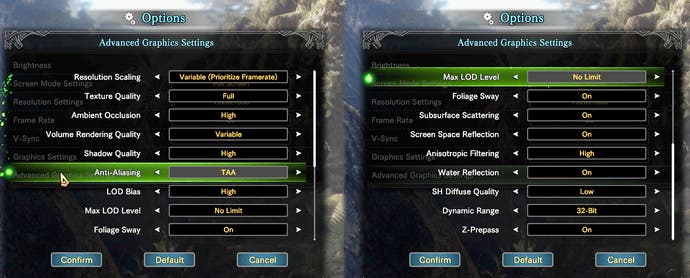
| GTX 1070/1080p | Highest/On | High | Medium | Low | Off |
|---|---|---|---|---|---|
| LOD Bias | - | 100% | Up To 155% | Up to 160% | - |
| Volumetrics | 100% | 107% | 109% | 113% | 120% |
| Ambient Occlusion | - | 100% | 107% | 108% | - |
| Vegetation Sway | 100% | - | - | - | 113% |
| Shadows | - | 100% | 103% | 104% | - |
| SH Diffuse | - | 100% | 106% | 108% | - |
| Water Reflections | 100% | - | - | - | 102% |
| Screen-Space Reflections | 100% | - | - | - | 103% |
| LOD Level Max | 100% | - | - | - | 101% (-1 Setting) |
Taking those settings into gameplay, GTX 1070 still can't deliver a locked 1080p60 and so in turn, achieving equivalent performance on the 1060 and RX 580 is impossible - so it's time to tweak settings further, reducing cost but retaining as much fidelity as possible. The easiest wins are volumetrics and SH diffuse resolution, which in gameplay at least, do not have a big visual difference. Switch the latter to low if you haven't already, and adjust the former to variable. Monster Hunter does have some dynamic settings - including resolution - which are extremely useful in maintaining performance. Variable volumetrics seems to deliver much the same experience as Xbox One X generally and saves plenty of performance.
Even with these more modest, settings Monster Hunter World is still seeing GPU related drops and seems particularly prone to losing a lot of performance in alpha-heavy scenes. Putting RX 580 and GTX 1060 head to head, the AMD card seems faster in general, but those problem areas are vastly more impacted than they are on GeForce with obvious, ugly stutter. A lot more performance can be clawed back by adjusting the LOD setting, but this will take you below console's best showing and is clearly visible in gameplay, introducing some distracting pop-in. But if you're looking to increase frame-rate, this is the easiest route forward.
The last bastion for achieving 60 fps on mid-range GPUs while retaining high LODs is to explore Monster Hunter's dynamic resolution scaling options. First of all, there are fixed resolution options you can choose that keep the HUD at native resolution, while 3D elements are rendered at a lower pixel-count. Assuming a 1080p output, changing the resolution scaler to medium drops the buffer to 90 per cent on each axis, giving a 1728x972 internal pixel-count. Adopting medium sees this drop to 75 per cent for a 1440x810 resolution. But more interestingly, there are dynamic options that change resolution on the fly according to load, when you choose a frame-rate limit, such as 60fps.

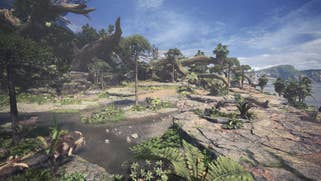
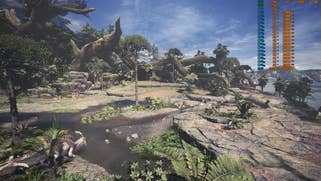
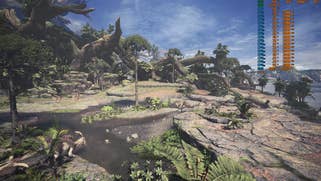
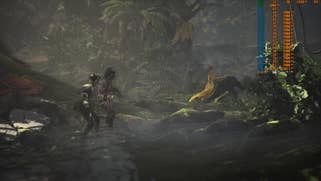
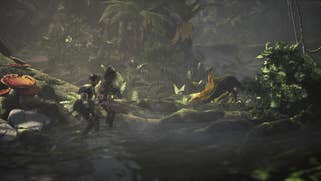
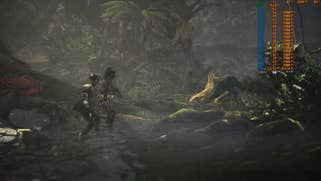
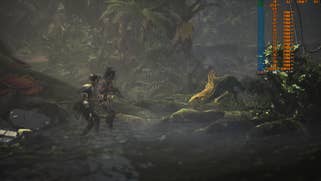
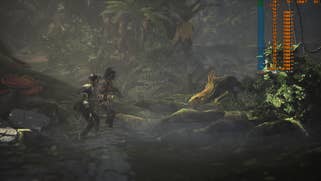
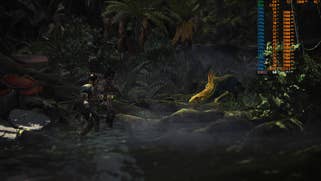




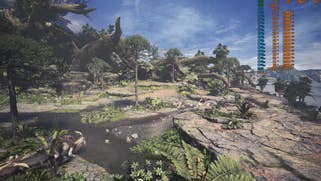

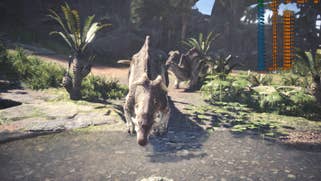
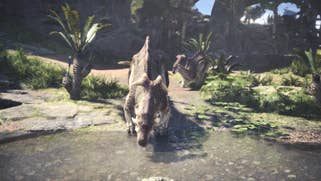
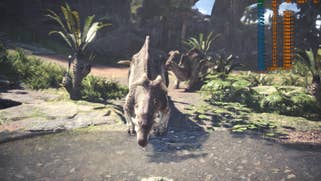
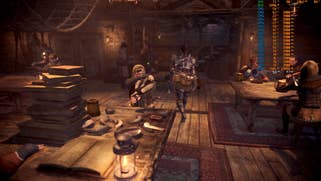



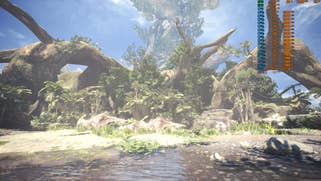

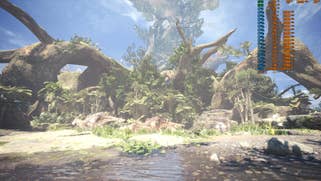
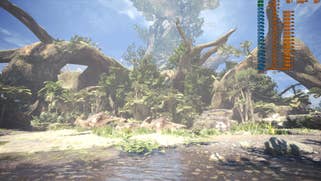



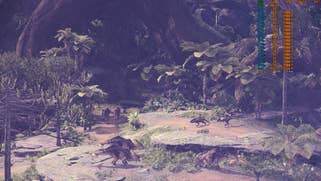

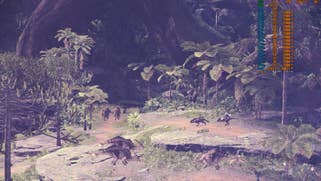

With the 'prioritise resolution' option, the frame-time threshold and relative drops of resolution are more conservative - to the point where we couldn't actually see it do anything on our chosen settings. With 'prioritise frame-rate', the resolution adjusts more aggressively to maintain performance - and this is essentially our magic button on PC to get that extra push up in moments that would otherwise be below 60fps. It does the job well enough, but Capcom's dynamic scaling solution isn't totally ideal. There's a 'gap' of a couple of frames as it transitions between resolutions, introducing some stutter.
So, in a sense, we've failed in our quest - locking to 1080p60 on PC with an Xbox One X-level visual feature set is just too much and compromises need to be made. By and large, the game still looks great, but I can't shake the feeling that this game's settings still do not offer enough granularity. The massive difference between medium and high LOD settings in outdoor areas is telling. More intermediate options would surely make a lot of sense here for a setting that has such a dramatic effect on GPU performance. The high preset here looks great, but it is expensive - while medium and low are increase performance dramatically, but look a lot, lot worse. On top of that lack of granularity, I think the fact that some textures currently look worse than Xbox One X and the fact that screen-space water reflections are not working correctly suggests that a bit more testing would have really helped this PC release.
And addressing matters beyond the visuals, Monster Hunter World has some issues in basic 'quality of life' menu navigation. There are so many menus and approval prompts in this game that using them makes for a wearying experience, while the lack of a basic, fully working quit function is also annoying. The classic ALT-F4 fall-back doesn't work and in some game sequences, the only way we could fully quit the game was to drop back to the desktop, access the Windows task manager and kill the process there.
Ultimately, what we have here is a port that isn't too onerous on memory or CPU, but really hammers your GPU hard if you're looking to enjoy the game at its best, even on relatively lowly resolutions like 1080p. The bugs and graphics omissions are a little puzzling, while additional depth in the settings may also help to extract further scalability for those with mid-range gaming PCs. Right now it's challenging for 1080p champions like the RX 580 and GTX 1060 to deliver good, solid performance at 60fps without losing resolution via the dynamic scaler, or alternatively losing detail via the crucial LOD setting. Hopefully a patch will come along to address the bugs - but we'd like to think that Capcom could push the boat out a little higher and do more to address the title's scalability issues.





